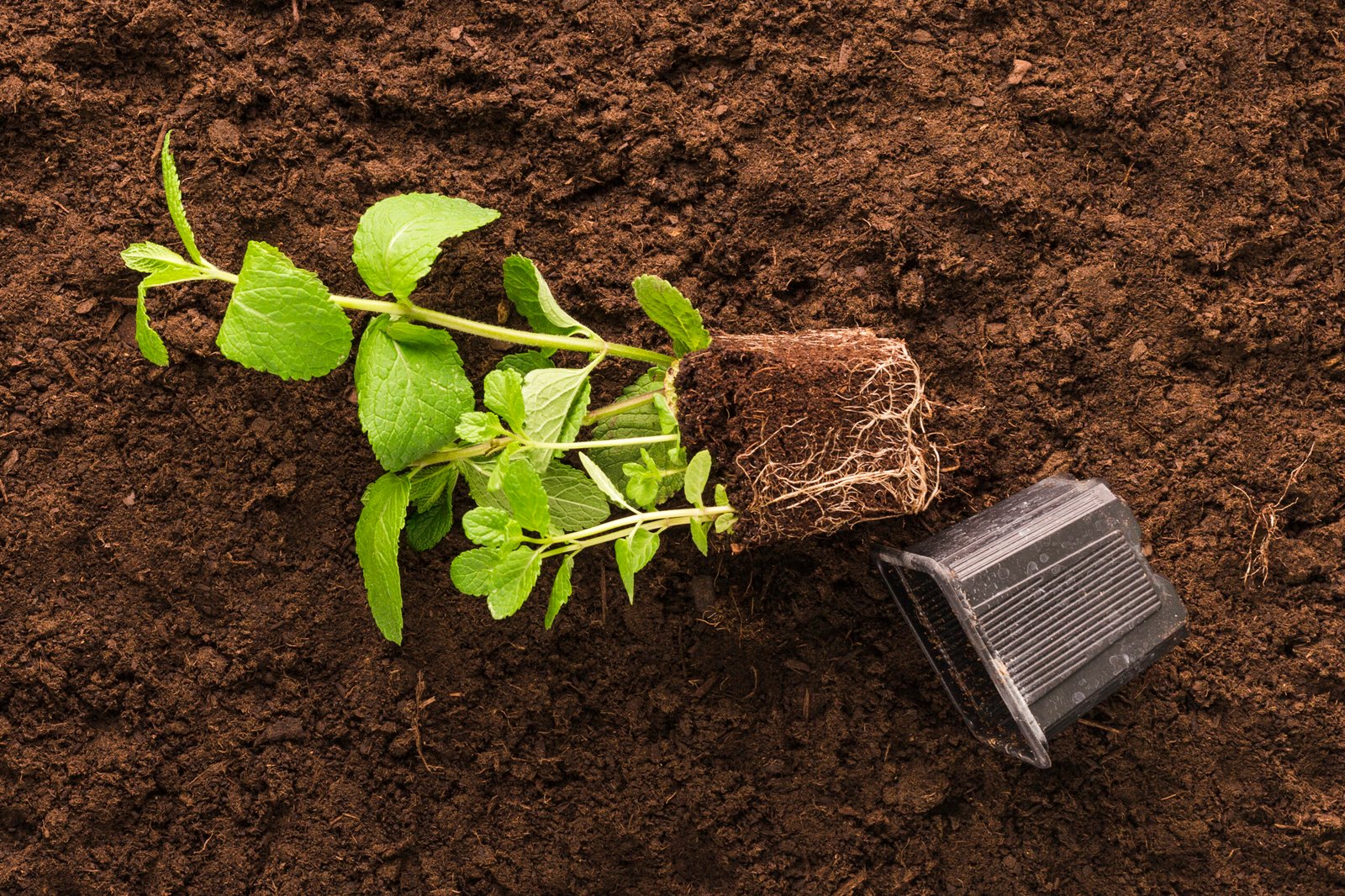Transplanting plants can be challenging, especially when it comes to ensuring soil nutrient acclimation plant transplant success. One of the main challenges is ensuring the plant survives the shock of being moved from one environment to another. A key factor that determines success is soil nutrient acclimation. If the plant cannot acclimate to the new soil’s nutrient composition, it may experience stunted growth, yellowing leaves, or even death.
The good news is that you can take steps to ensure smooth nutrient acclimation during transplanting. By preparing the soil, carefully managing the plant, and following best practices, you can dramatically increase your plant’s chances of thriving in its new location. Let’s dive into the details.
What is The Acclimation of Soil Nutrients?
The process whereby a soil nutrient is acclimated is when, through a change in PH or the addition of the particular nutrient /s that are needed soil will now be better-suited for the growth of plants. These nutrient acclimatization activities are unique to the successful growth of different plant species and the operation of transplantation.
The Transplant Shock is the term that refers to the disturbance a plant endures if it does not get its proper environmental conditions. Macronutrient emission is the main driver of plant growth by the soil, which in turn is, through a series of plant reactions, altered by the availability of nutrients. Nutrient acclimation, the corollary of wok induced by seedlings in adjusting to novel conditions, is a major challenge for the proper establishment of the plants in an enclosed environment and for the plants’ growth.
Importance of Soil Nutrients in Plant Transplanting
Soil conditions of the transplanting site are a delicate thing for the plant since it is either used to a different spot or has different soil characteristics. Soil nutrients are very important for the growth and benefit of the plant. If the plant cannot get as much of, or any nutrients, it will not be able to grow the roots strongly, and therefore their growth is inhibited. Thus is the significance of soil nutrients for the plant’s health:
- Healthy root growth: Soil that is nutrient-rich enables the roots to become stronger and healthier, which is one of the conditions required for good transplanting.
- Strong Growth: The availability of nutrients in proper proportion can alternatively boost the total growth of the plant, so that a plant becomes more resistant and may adapt to the new environment easily.
- Lower Shock: When a plant is deprived of the nutrients it needs, its inability to absorb is what triggers the phenomenon of transplant shock. Consequently, the plant can hardly adapt and may even soften or show internal brownish areas.
Preparing the Soil for Transplanting
Given the above information, of paramount importance is the need to get the soil ready before any transportation work is done. Here is what you should do:
1. Test the Soil
Soil testing is the main factor that gives the current nutrient composition, pH, and other factors that might affect plant growth. For example, testing the soil ph is made easy by several test kits sold in garden centers and can also be done by a private laboratory. The results the lab produces will let you know what nutrients are missing in your soil sample. In addition, if you provide the soil test results, they will prescribe the remediation.
2. Amend the Soil
The analysis of a soil test will show you exactly what changes are necessary to bring the soil to the required condition. These amendments take priority:
- The incorporation of the compost is an effective strategy to improve the richness of the soil and ensure a controlled delivery of the nutrients absorbed from it.
- Organic fertilizers are products that contain the necessary carbohydrate elements such as Carbon, Hydrogen, and Oxygen, and sometimes also the earth mineral particles. They are also good for the plant’s atmospheric absorption of carbon dioxide and nitrogen.
- Acidification and liming: Different solutions can be used to either completely change the pH level or alkalinize the soil if that is necessary in your plant’s soil. In some cases, more than one solution is necessary.
3. Ensure Proper Drainage
The prevention of root rot is most effective by supplying the plant’s root system with all the required air that can make the best out of its function. Loose the ground and introduce organic matter like peat or sand into it to improve its drainage. If the ground has too much of it sticking out, consider constructing raised beds for the plants to have more space they can spread out in when they grow.
Choosing the Right Time to Transplant
It is a paramount matter when it comes to planting plants at the right time. There are some plants which are more vigorous in the winter or in the fall as the accumulation of heat in the summer days is additional stress to them. The ideal period for translocating plants is the beginning of spring, or fall, because the weather is not too much of a load for the plants.
Steps to Plant Transplantation Successfully
1. Water the Plant
First, remember to use the advantage of watering your plant completely for a few hours or day before moving it. This causes the plant to have little impact force on it and as a result, the root will be unbroken when you are pulling up the plant from the old place then.
2. Prepare the Plant’s Root Ball
If there is a need to break the soil around the crop, be careful and perform the process very slowly and carefully. Also, during the pull-through process curl a thick layer of plastic under the root between the frame and the soil to avoid losing moisture from the plant due to excess water accumulation.
3. Plant at the Correct Depth
When the plant has been relocated, the rule should be to stick to the gardener’s rule of thumb and put the plant exactly as deep as it was in the old place. Overshooting the ground level is a common mistake that leads to stem decay; in contrast, a too shallow planting will make the roots suffer from the lack of moisture, and thus “dry” the plant. This is the drying process.
4. Water After Transplanting
After planting, ensure you water it deeply so that soil can fill in between roots and air pockets will be eliminated. Checking the plant from time to time and watering accurately will keep water stress at the minimum especially, in the early weeks.
Maintaining Nutrient Levels After Transplanting
The activity of transplanting is more than just the second-to-last stage that still has soil nutrients that if well maintained can get the desired ends. There are a few items that should be done to enable the soil nutrients to be analyzed at least a few times a year. The key to the success of this business is the growth of plants that come along with the proper management of the soil which in return ensures the nutrients are been taken good care of.
- Mulching: Mulching plants using organic waste is one of the ways to prevent weed growth. Mulch acts as a barrier to water, keeps the soil at an even temperature, and introduces the soil to earthy material as it decomposes.
- Regular Feeding: Feeding a mixture of organic fertilizers worked the best to advantage over fertilizing in the past. Take, for example, the growing season when nutrients are in almost half the volume needed to feed the plants and compost the rest On the contrary you’d better not to make it too many nutrients which can disturb the one you have entered with.
- Monitoring Soil Health: Carry out soil tests periodically to check whether the soil is acidic or alkaline and whether or not there are sufficient amounts of macro and micronutrients. Add the missing elements to the soil if you see some of them are enough.
Common Mistakes to Avoid During Plant Transplanting
The process of transplantation is not in good shape because there are certain mistakes that play a big role in slowing down the acclimation process of your plant. Here are a few pitfalls to avoid:
- Testing without the Soil: When you do not perform a soil test, you are sort of in the dark in terms of what your plant really needs. This can be a potential problem as your plant may have undefined deficiencies.
- Transplanting in the Wrong Time: During the hot days of summer, trees can be transplanted. Consequently, heat stress will occur and lead to the loss of the plants’ ability to acclimate.
- Over or under plant watering: In both situations, cover the roots too much or too little with water and you will ruin the roots. The use of irrigation has to be commensurate through these two for what concerns the soil on correction of the moisture balance.
- Drainage Disregard: If the soil is deficient in proper drainage, it will cause the roots of the plant to suffocate and become prone to root rot.
Practical Strategies for Transplanting Without Any Fail
- Acclimating Your Plants: Seedlings and plants that are removed from the inside should be hardened off first by slowly introducing them to their new surroundings over the course of a week.
- Incorporate Root-Stimulating Fertilizer: Offer some thought to the use of a root growth expanding fertilizer that introduces faster root development after the transplantation procedure.
- Provide for Transplants: Besides a shade cloth or temporary protection for the first few days, close plantings will help reduce heat and wind stress on the plants.
Conclusion
The transplantation of plants is an art that is of the highest value and it is required to give careful attention to various aspects of it such as the problem of acclimation to soil nutrients by plants, the biggest factor that would be affected would be their adaptation to the new environment. The proper nutrients, the pH testing, and the best ways are the ones you can use to ensure your plants get successfully transplanted. In addition to this, you must be certain that you pay close attention to the soil’s health and make the necessary corrections to your management practices that will assure your plant’s longevity.
Following the acclimation process of the soil nutrients in the case of transplanting the plants will prevent you from experiencing the pain of the shock and create a conducive environment such that the plants can easily thrive. It is the right soil adjustment that is done to the plant root that can turn the tables for your objective of having the plants amazing green healthy plants.







